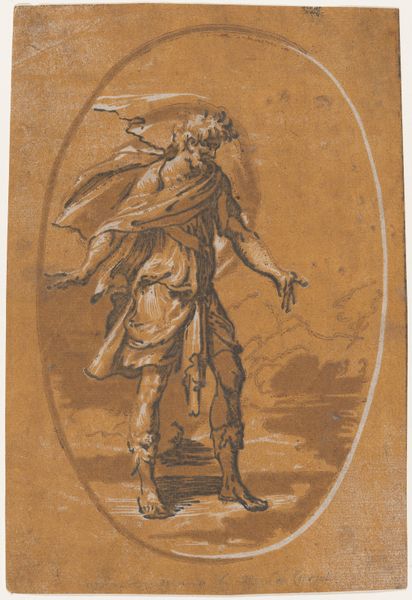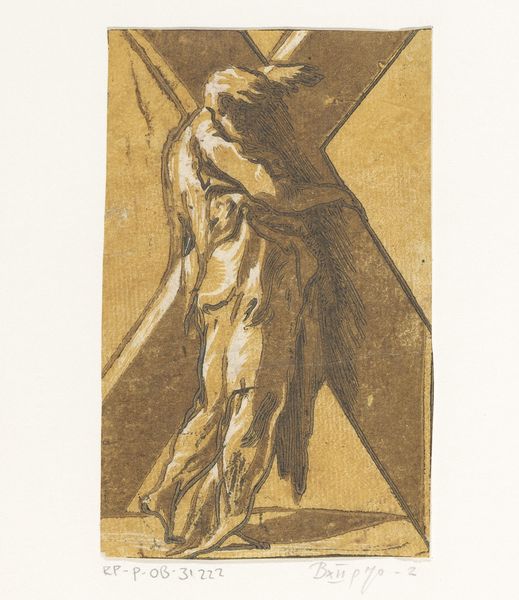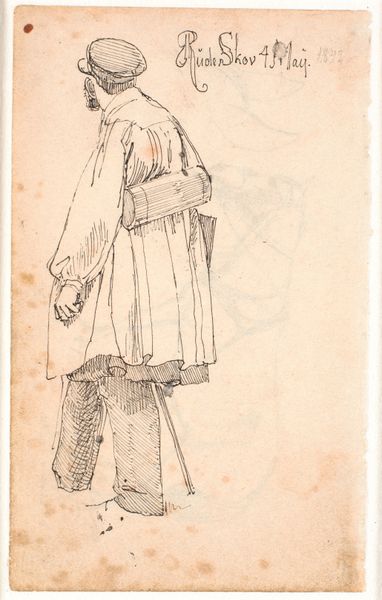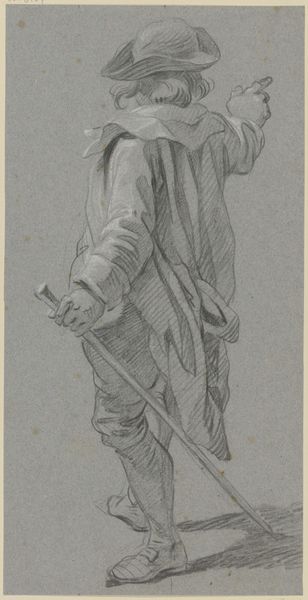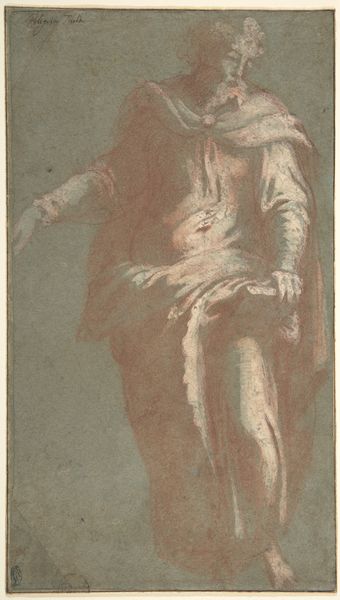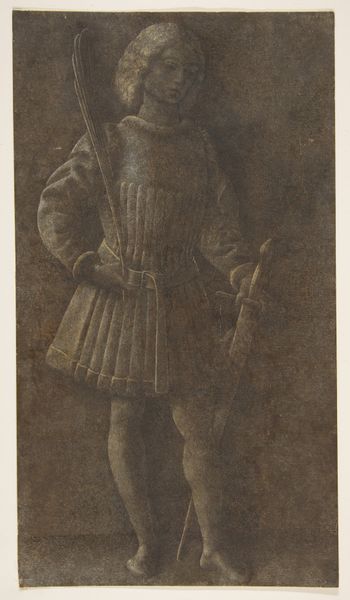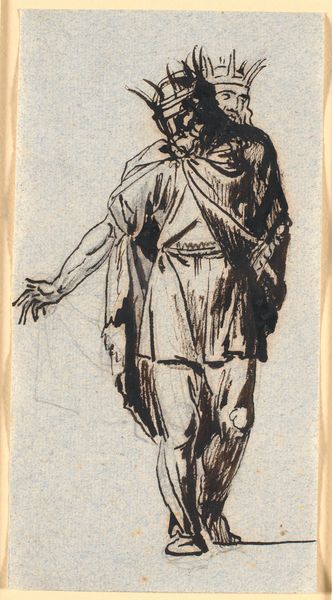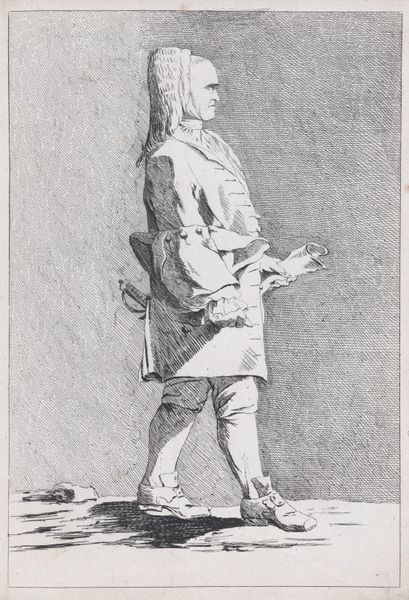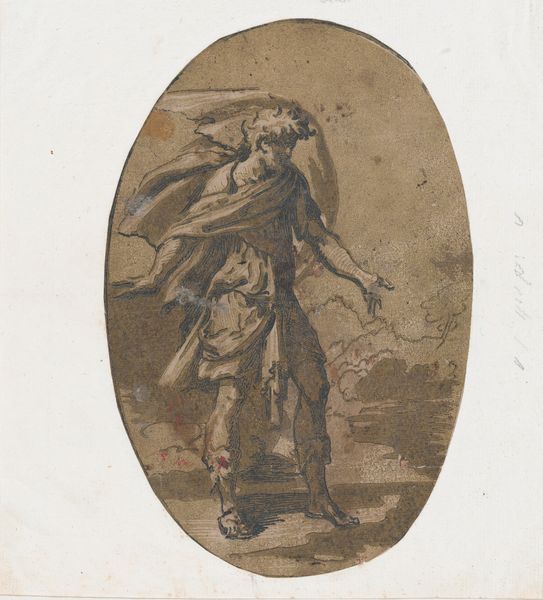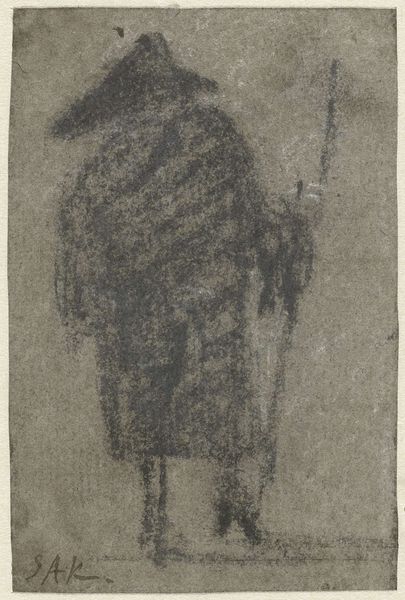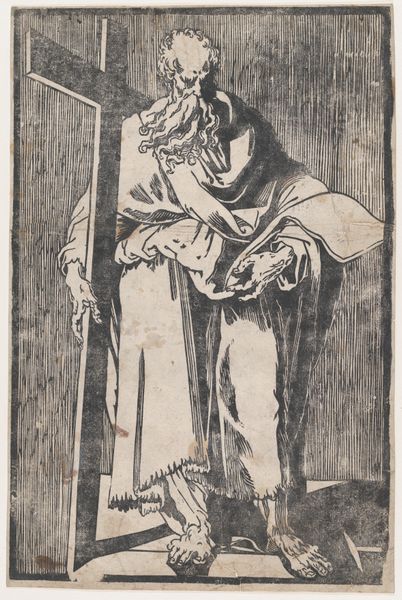
Gaius Servilius Ahala presents the body of Spurius Maelius to Cincinnatus 1535
0:00
0:00
drawing, charcoal
#
drawing
#
charcoal drawing
#
figuration
#
charcoal
#
history-painting
#
italian-renaissance
Copyright: Public domain
Curator: There’s an incredible weightiness to this drawing, a sort of brooding tension. The limited palette of charcoals almost makes it feel like a fragment of a fresco, or something excavated. Editor: That’s precisely what’s so compelling. Domenico Beccafumi completed "Gaius Servilius Ahala presents the body of Spurius Maelius to Cincinnatus" around 1535. What you’re reacting to is Beccafumi’s genius. He was clearly interested in more than just portraying historical drama; he was grappling with its psychological impact on his viewers. Curator: The figures appear almost sculpted from the shadows. This really highlights a particular cultural memory about civic duty and sacrifice doesn't it? The figures embody a certain Roman gravitas that clearly still resonated during the Italian Renaissance. Editor: Absolutely. Think about the charcoal itself, too—its readily available, its ephemeral, used in everything from cartoons for frescos to life drawings. By choosing charcoal, Beccafumi connects this noble historical narrative to very grounded material practices, blurring that high art/low art divide we often create in our minds. It asks the viewer to question that relationship too. Curator: Indeed! The diagonal thrust of the sword practically bisects the image. As such, is it a symbol of power, or even, in this context, betrayal? Editor: Maybe both? Consider the act depicted. Gaius Servilius Ahala presenting the body is both a moment of triumph, executing a would-be tyrant, and also a somber presentation of death before Cincinnatus, the paragon of Roman virtue. So it functions as an historical record but also as a lesson in material and ethics of governing. Curator: So interesting that the drawing emphasizes gesture and implied narrative more than detail. I almost see the ethos of the Roman Republic encoded in these economical strokes and contrasts. The cultural memory becomes an exercise in ethical consideration, framed materially by these everyday art supplies. Editor: Yes. This piece offers a poignant and powerful reflection on governance, not only then, but across the centuries since.
Comments
No comments
Be the first to comment and join the conversation on the ultimate creative platform.
